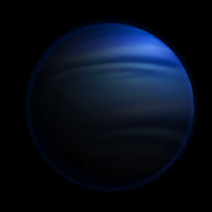Cepheids, a particular kind of stars, may actually be closer to us than we thought. They are, among others, used as ‘standard candles’: they help us measure cosmic distances, because of a well-defined relationship between their variable luminosity and pulsation period. This is described by the Leavitt Law, named after Henrietta Leavitt, who discovered that the brighter the star, the slower its brightness varies. Cepheids, also present in other galaxies, allowed to measure the distances of these galaxies. Recent observations by NASA’s Spitzer Space Telescope of unexpected properties of cepheids indicate that these distance estimates might not be as reliable as we thought.
Massimo Marengo of Iowa State University in Ames and his colleagues, using the infrared cameras of Spitzer, discovered a nebula of gas and dust surrounding Delta Cephei (which gave its name to the cepheid class), with a bow shock in the direction of the star’s motion. According to their calculations, the star must then be losing mass at an enormous rate (2000 tons per second). Theoretical models have always given higher masses for cepheids than observed; if all cepheids experience mass loss, this difference might finally be explained.
On the other hand, as Marengo explains, these nebulae may absorb light, making cepheids appear dimmer than they really are, and thus be closer than they appear. Future observations should allow much more precise measurements.
Cepheids are also a means by which the Hubble Constant can be established: resolving the discrepancy previously mentioned might help calculating a better value of the constant, and better constrain the cosmological parameters of the Universe.


